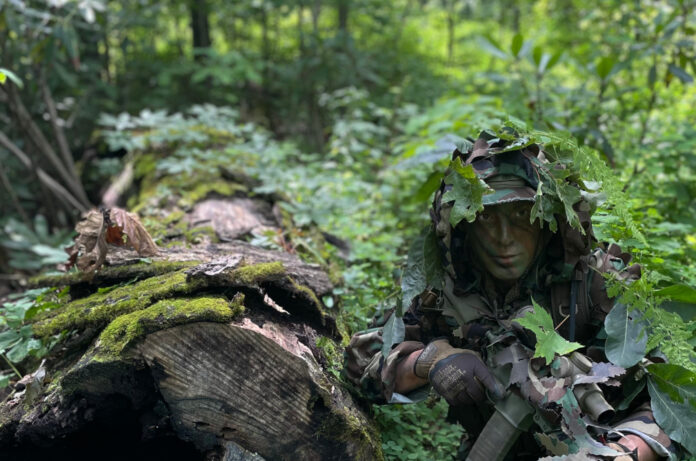Ghillie suits are an essential tool for anyone looking to blend seamlessly into their surroundings, whether it be the arid desert, snowy landscapes, or dense woodlands. In this guide, we will delve into the art of setting up your ghillie suit for optimal camouflage in each of these environments, covering your head, body, and equipment.
Choosing the Right Colors:
In a desert environment select earthy tones such as light browns, tans, and dusty greens to mimic the desert terrain. Avoid dark colors that can stand out against the bright backdrop.
In snowy environments opt for whites and light grays to blend into the snow-covered landscape. Add subtle touches of light blues or pale greens to mimic shadows and the natural hues found in snowy areas. In woodland environments use a mix of green, brown, and tan-colored materials to match the various shades of the forest. Incorporate different textures and patterns to imitate the diversity of vegetation.
In a desert environment select earthy tones such as light browns, tans, and dusty greens to mimic the desert terrain. Avoid dark colors that can stand out against the bright backdrop.
In snowy environments opt for whites and light grays to blend into the snow-covered landscape. Add subtle touches of light blues or pale greens to mimic shadows and the natural hues found in snowy areas. In woodland environments use a mix of green, brown, and tan-colored materials to match the various shades of the forest. Incorporate different textures and patterns to imitate the diversity of vegetation.
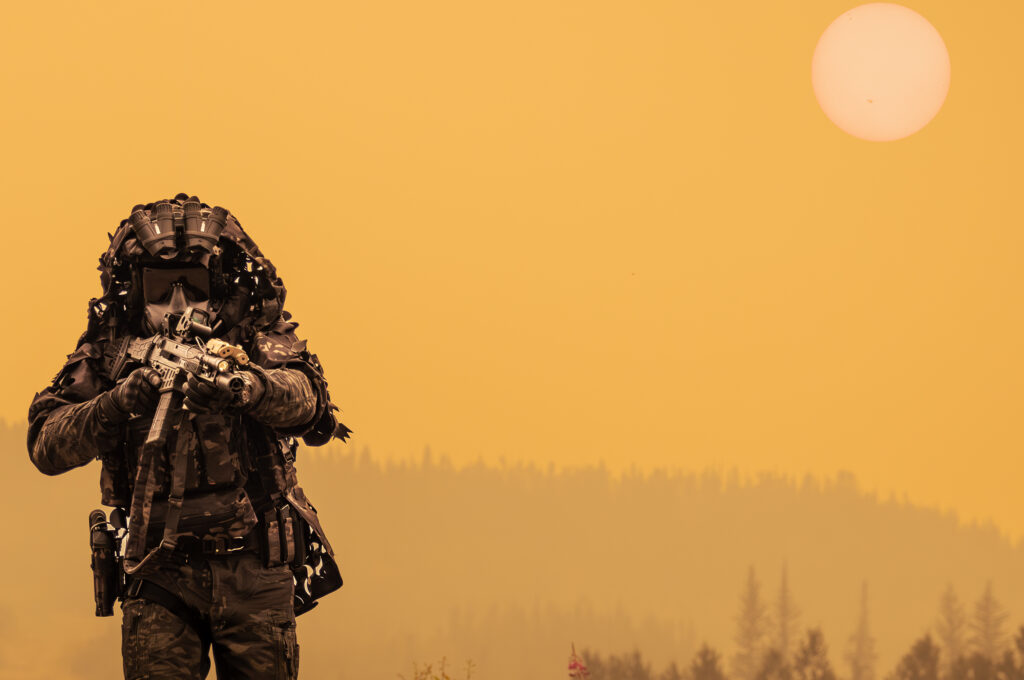
Adding Local Vegetation:
In dry areas, such as desert terrain, attach pieces of local vegetation like small twigs, dry grass, or bits of shrubs to your suit. This helps break up the outline and adds depth to your camouflage. In snowy environments attach small pieces of white fabric or netting to simulate falling snow. This can break up your silhouette and add an extra layer of realism to your ghillie suit. In heavily wooded areas attach leaves, twigs, and bits of moss to your ghillie suit to blend in with the woodland surroundings. Ensure these elements are securely attached to withstand movement.
In dry areas, such as desert terrain, attach pieces of local vegetation like small twigs, dry grass, or bits of shrubs to your suit. This helps break up the outline and adds depth to your camouflage. In snowy environments attach small pieces of white fabric or netting to simulate falling snow. This can break up your silhouette and add an extra layer of realism to your ghillie suit. In heavily wooded areas attach leaves, twigs, and bits of moss to your ghillie suit to blend in with the woodland surroundings. Ensure these elements are securely attached to withstand movement.
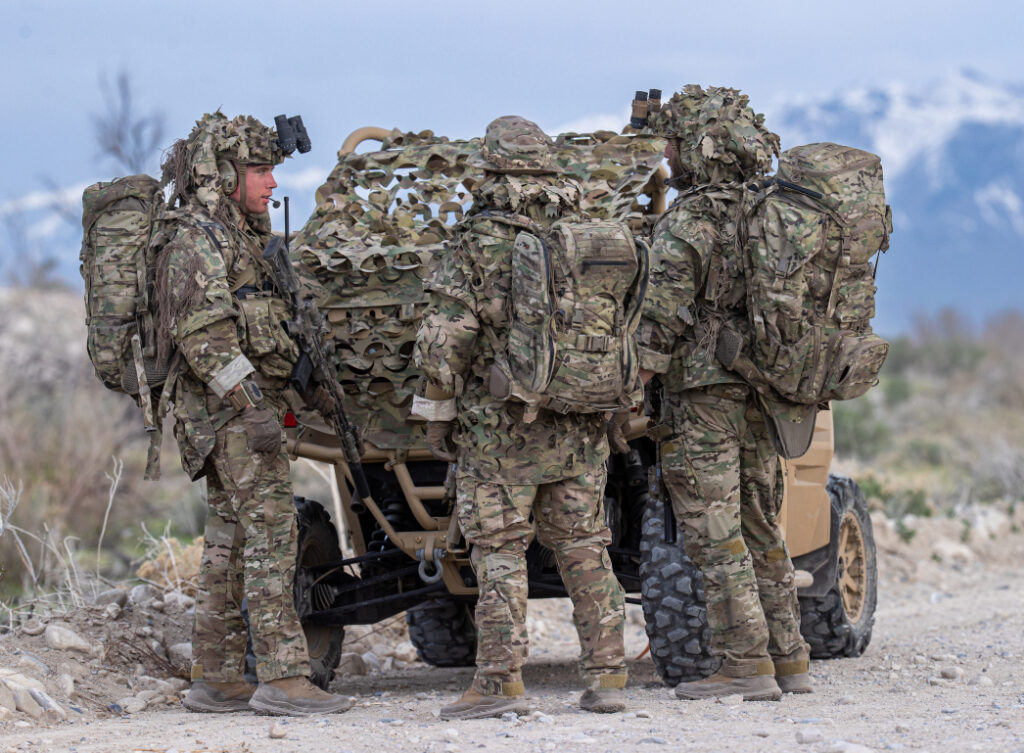
Head and Face Covering:
Especially in desert terrains use a lightweight shemagh or scarf to cover your head and face. Ensure it matches the color scheme of your ghillie suit and offers some shade for added concealment. In snowy areas wear a white balaclava or ski mask to cover your head and face. Ensure it doesn’t create a sharp contrast with your ghillie suit. In woodland areas use a head covering that matches the ghillie suit’s color scheme and incorporates natural elements like leaves and twigs. A boonie hat with added camouflage can also be effective.
Especially in desert terrains use a lightweight shemagh or scarf to cover your head and face. Ensure it matches the color scheme of your ghillie suit and offers some shade for added concealment. In snowy areas wear a white balaclava or ski mask to cover your head and face. Ensure it doesn’t create a sharp contrast with your ghillie suit. In woodland areas use a head covering that matches the ghillie suit’s color scheme and incorporates natural elements like leaves and twigs. A boonie hat with added camouflage can also be effective.
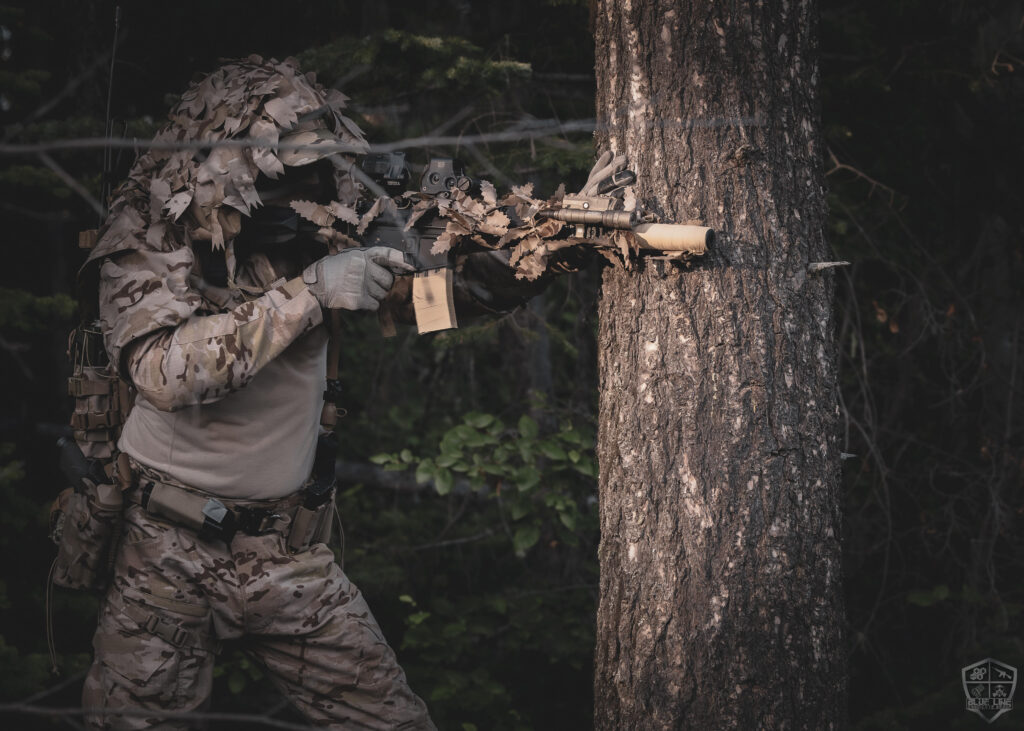
Equipment Camouflage:
In dry and desert terrains wrap your equipment, such as your rifle or backpack, in burlap or fabric that matches the color of the surrounding environment. Break up the outline by adding natural elements like local rocks or sand.Especially in arctic or tundra-like terrains wrap your equipment in white fabric or use snow camo covers. Avoid dark colors that might stand out against the snowy backdrop. In heavily wooded areas cover your equipment with burlap or fabric in colors that match the forest environment. Add foliage and branches to help break up the outline.
In dry and desert terrains wrap your equipment, such as your rifle or backpack, in burlap or fabric that matches the color of the surrounding environment. Break up the outline by adding natural elements like local rocks or sand.Especially in arctic or tundra-like terrains wrap your equipment in white fabric or use snow camo covers. Avoid dark colors that might stand out against the snowy backdrop. In heavily wooded areas cover your equipment with burlap or fabric in colors that match the forest environment. Add foliage and branches to help break up the outline.
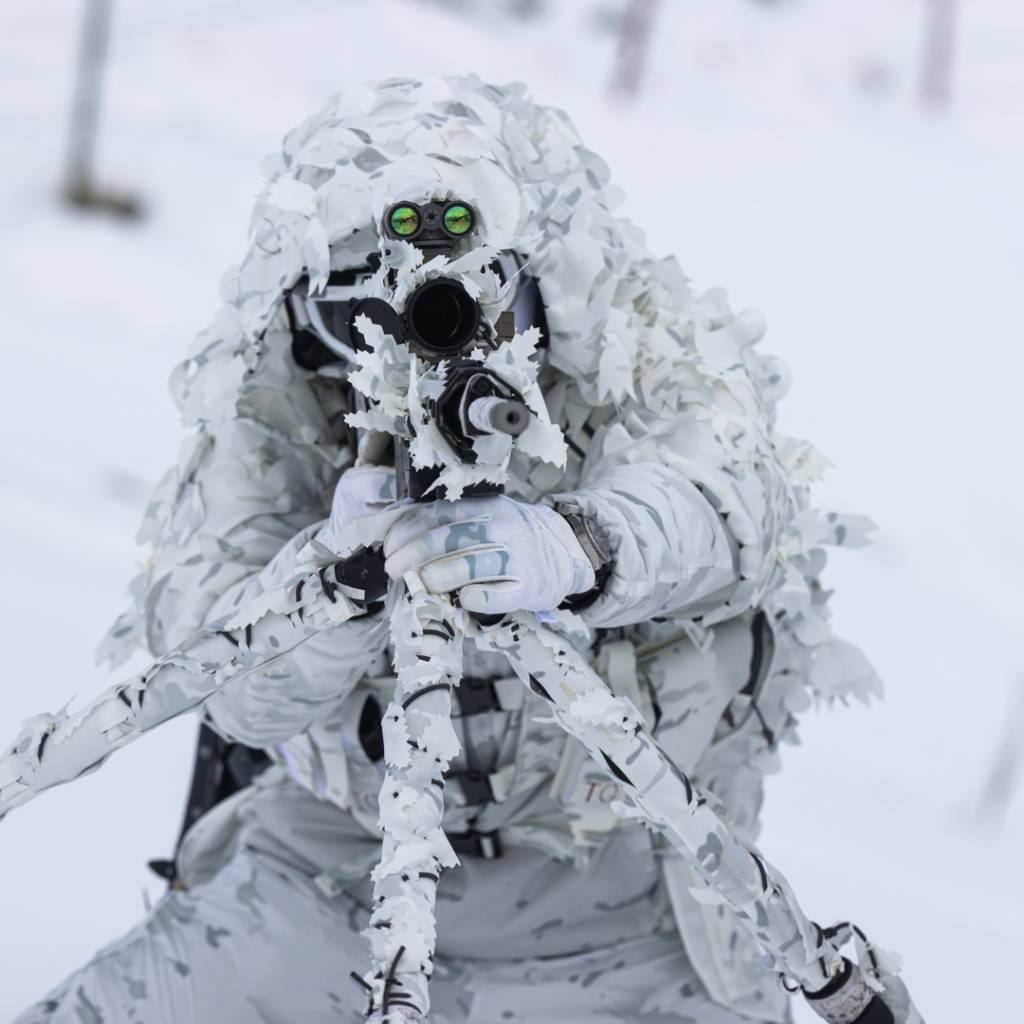
Mastering the art of ghillie suit camouflage involves understanding the specific characteristics of the environment you’ll be operating in. By tailoring your suit to the desert, snowy, or woodland surroundings and considering factors like color, texture, and local vegetation, you can enhance your ability to remain undetected and truly become one with your environment. Always remember to adapt and modify your ghillie suit based on the specific conditions you’ll be facing for the best results in any scenario.

